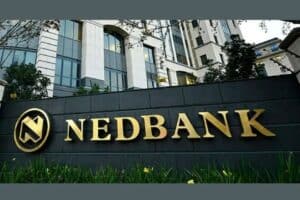The change from ‘negative’ to ‘stable’ is an important sign that the worst is behind us.

The tide is starting to turn for SA banks regarding credit ratings by international ratings agencies.
Rating agencies are cautiously signalling that the outlook for banks in SA is improving or, at least, not expected to deteriorate further.
Fitch Ratings is the latest of the major agencies that announced a slight improvement for SA banks in its outlook on long-term Issuer Default Ratings (IDRs) for the five largest banks.
The agency announced that the long-term IDRs of Absa, Standard Bank, Investec, FirstRand and Nedbank have been upgraded from negative to stable. Fitch also affirmed the banks’ credit rating at BB-.
At the same time, the ratings outlook of four of the banks’ holding companies were changed from negative to stable.
“We have also revised the outlooks on the long-term IDRs of four South African bank holding companies – Absa Group Limited, Investec Limited, Nedbank Group and Standard Bank Group – to stable (from negative) and affirmed the IDRs at BB-,” Fitch said in its announcement.
The agency has also affirmed the viability ratings, national ratings and debt ratings of all the banks and that of their holding companies.
The agency has simultaneously withdrawn the support rating and support rating floor of all the banks “as they are no longer relevant” to the agency’s coverage following the publication of updated rating criteria a month ago.
“In line with the updated criteria, we have assigned government support ratings of b+ to all banks and no support to all bank holding companies,” Fitch said.
Turnaround
While the improvement from negative to stable does not seem like a big issue, it nevertheless shows that the outlook for banks is not expected to worsen – a big turnaround from the situation of the last few years when nearly every ratings update was worse than the preceding rating.
Fitch noted that the recent ratings action follows the revision of the outlook of the country’s long-term IDRs to stable from negative some two weeks ago.
FirstRand explains in a discussion of its rating that the ratings of SA-based banks are constrained by the country’s sovereign rating, basically the risk rating of the government’s obligation to lenders.
“This is due to the direct and indirect impact of sovereign distress on domestic banks’ operations,” says FirstRand, adding that S&P Global Ratings has also assigned a stable outlook to FirstRand Bank with a Ba2 rating, while Moody’s still has it on negative outlook, but with a slightly better rating of Ba2.
Moody’s also announced a few weeks ago that Standard Bank’s proposed acquisition of Liberty Holdings “would be credit positive” and gave banks good ratings for environmental, social and governance (ESG).
Key rating drivers
Fitch says that the improvement of the outlook of the long-term IDRs of all the banks was driven by their standalone creditworthiness, as expressed by their respective viability ratings (VR).
“The VRs of all South African banks and holding companies are constrained by the South African sovereign rating as they do not meet Fitch’s criteria to be rated above the sovereign.
“Our assessment considers the concentration of their operations within the country and high sovereign-related exposure relative to equity (ranging between 185% and 250% at August-2021).
“The VRs of the four bank holding companies are at the same level as their respective group VRs as Fitch considers their failure risk to be substantially the same as that of their respective group,” according to the announcement.
It says the improvement reflects the view that downside risks to banks’ standalone creditworthiness, in particular operating environment conditions and capitalisation, have receded.
Of interest is that Fitch sees less government support for SA banks, if it is ever needed.
“The b+ government support rating (GSR) assigned to all banks reflects a limited probability of support from the SA authorities, if required. This considers the banks’ systemic importance, but also the likely adoption of bank resolution legislation in SA.
“Once the resolution framework is enacted and implemented, Fitch expects to downgrade the GSR of all banks to ‘no support’, reflecting our view that notwithstanding their systemic importance, the SA authorities’ propensity to support the banking system will no longer be certain.
“The ‘no support’ GSR assigned to all bank holding companies reflects Fitch’s view that sovereign support is unlikely to extend to holding companies due to their low systemic importance and liability structure, including foreign/wholesale funding,” Fitch said.
Rating sensitivities
Fitch warns that there are several factors that could lead to it changing the outlook back to negative, or even trigger a downgrade.
“The long-term IDRs of all banks and bank holding companies are constrained by SA’s rating, meaning a sovereign downgrade would result in downgrades.
“A downgrade of the long-term IDRs may also result from a material weakening in capitalisation, which could stem from greater-than-expected asset quality deterioration or investment portfolio losses.
“The banks’ GSRs could be downgraded to ‘no support’ in case of bank resolution legislation being implemented in South Africa,” noted the rating agency.
It said the only factor that could lead to a positive outlook or an upgrade of banks’ credit ratings would be an upgrade in SA’s sovereign credit rating.
By Adriaan Kruger
This article first appeared on Moneyweb and was republished with permission. Read the original article here.






